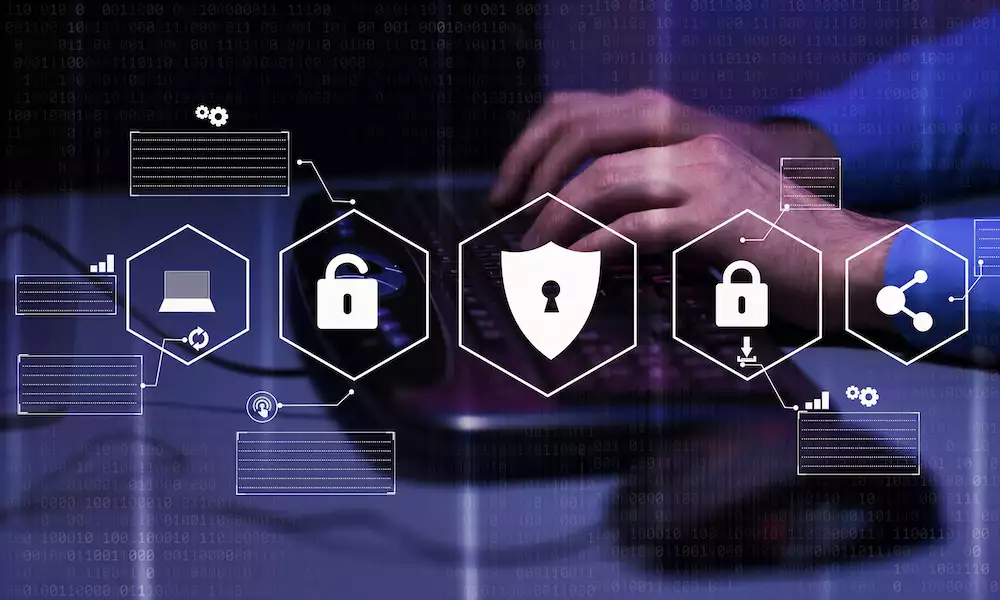Security
7 Elements Of A Proactive Cybersecurity Strategy

To be proactive is to foresee potential problems, alterations, or necessities and respond accordingly. This principle applies to cybersecurity as well.
Proactive cybersecurity encompasses all measures taken before the occurrence of cyber-attacks. Unfortunately, many businesses fail to adequately prepare for such threats until too late.
In contrast to reactive measures taken post-attack, a proactive cybersecurity strategy involves preemptive action before any attack occurs. It represents a proper stance of preparedness.
A massive part of proactive cybersecurity involves organizational activities and procedures that mitigate risks. These practices entail identifying and rectifying system infrastructure vulnerabilities, inhibiting data and security breaches, and constantly assessing the strength of your security measures.
If you aim to implement a proactive cybersecurity strategy in your company or business, here are a few elements to consider.
Threat Hunting

As its name implies, threat hunting’s main goal is to detect concealed threats in an organization’s systems. It leverages threat intelligence and indicators as a commencing point for a ‘hunt.’
Unlike other response methods, threat hunting counts as a proactive method for exposing present, obscure, and relentless threats in your organization. A comprehensive one may even unveil more sophisticated threats that could jeopardize your enterprise.
Organizations should employ cyber intelligence services, like threat hunting from Redpointcyber.com, to preemptively track and confront cyber threats. If used correctly, it can make the difference between averting a shutdown or succumbing to an attack.
You can use automated, all-inclusive threat-tracking tools to immediately identify, scrutinize, and evaluate threats. These tools let you see what’s happening across your digital ecosystem, enabling your business to respond instantaneously to suspicious activity.
Security Awareness Training
This should be a vital part of your proactive cybersecurity strategy. No matter how sophisticated your tools are, they’re only useful if your personnel know them. Therefore, your business must implement an extensive awareness training initiative to make your workforce active participants in your strategy.
Training can adopt an industrial approach to train your staff and cultivate a greater appreciation for data privacy and security. When done right, your team members help reduce hazards to your business. That translates to lower risks of financial losses and operational damage from cyber-attacks.
Furthermore, providing awareness training helps you cover more gaps in your protection. Your personnel will know the appropriate procedures for securing your company’s data and processes.
Organizations with security-savvy staff also have a more favorable standing in the market. Most consumers demand and deserve to feel safe when they transact with establishments.
Those that fall victim to cybercrime far too often get bad publicity. Thus, to safeguard your company’s reputation, data, and assets, allocate resources toward an updated security awareness program for your staff.
Implementing A Zero-Trust Approach
Having a zero-trust approach for your cybersecurity strategy is something to consider. This approach encourages you to authenticate and validate every user, device, and application trying to gain access to any company resources. Such an approach ensures excellent governance and transparency over your business’ users and traffic.
Furthermore, it safely links applications, devices, and users through corporate policies across various systems, which can benefit remote employees.
Penetration Testing
The high upfront cost of penetration testing is worthwhile when included in your proactive cybersecurity strategy. Also known as pen testing or ethical hacking, this process evaluates your computer system’s applications for potential vulnerabilities and threats, including software bugs, design faults, and configuration problems.
Penetration testing is also called a ‘white hat attack’ since it involves an authorized person trying to breach your organization’s network.
Pen testing is a protection measure that lets you do things like to find remedies and pinpoint risks.
Find remedies
This process offers resolutions that help detect and prevent attackers and isolate them from a company’s system effectively.
Pinpoint risks
It can help identify applications or systems vulnerable to cyber threats and find the necessary tools and protocols to mitigate such risks. Testing can also reveal critical system vulnerabilities and openings you may overlook.
Aside from these advantages, penetration testing lets you know your system’s strengths and weaknesses deeply. This knowledge helps you concentrate on improving the areas that need fixing and keeping well-performing ones up for as long as possible.
Routine Data Backups
Regularly backing up your data protects your business from cyber threats.
A data backup ensures that lost or damaged data can be quickly retrieved during a breach. This will allow you to resume normal operations quickly and keep downtimes minimal.
An external device or online storage can store your backup data. But if you’re concerned about physical tampering and accessibility, consider investing in a cloud storage backup service.
Incident Response Plans
An effective incident response plan is another essential part of your proactive cybersecurity strategy. It ensures that you’re well-prepared when attacks take place.
When devising a plan for your organization, it’s imperative to incorporate a decision-making process, notification protocol, and communications strategy.
Decision-making process
Your decision-making process should outline the individuals responsible for determining how and where to allocate crucial resources during a data breach.
Notification protocol
This section establishes when and to whom word about the breach should be given, including the authorities’ involvement if mandated by internal laws.
Communication strategy
Your communication strategy details the specifics regarding the kind of info to anticipate and the necessary briefings to provide to staff and stakeholders during the breach.
Your incident response plan should be created, tested, and regularly revised with the contribution of all stakeholders within your organization.
Plus integrate it into your data retrieval and business continuity plan.
Working With A Cybersecurity Agency Or Company
This is one of the smartest steps you can take for your strategy. As cybercriminals continue to develop more sophisticated attack methods, businesses of all sizes are at risk.
Partnering with a reputable managed cybersecurity company can provide you the all-around coverage. These third-party providers can provide evaluations to identify weaknesses in your system. From there, they can suggest safety measures to strengthen your company’s security posture.
Also, these firms have a crew of cybersecurity experts who can determine your company’s level of vulnerability and help you take the necessary steps to address that.
Know How To Be Prepared
A robust cybersecurity strategy aims to minimize and prevent risks from being exploited. It’s essential for any organization operating in today’s digital landscape. It isn’t a one-time effort, either, but a continuous process requiring constant investment.
Proactive cybersecurity isn’t a set of specific techniques and practices but a frame of mind for effective protection. Rather than waiting for a cyber-attack, taking action now is best.









